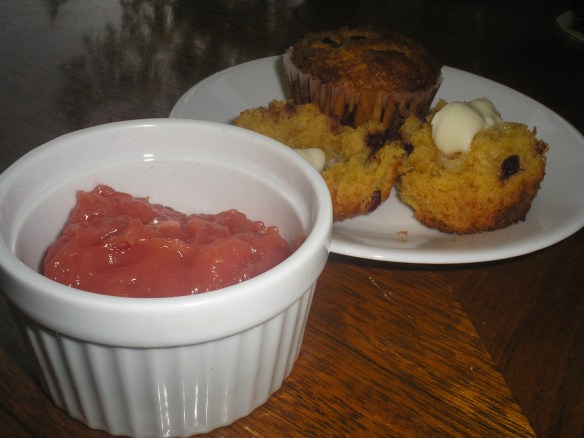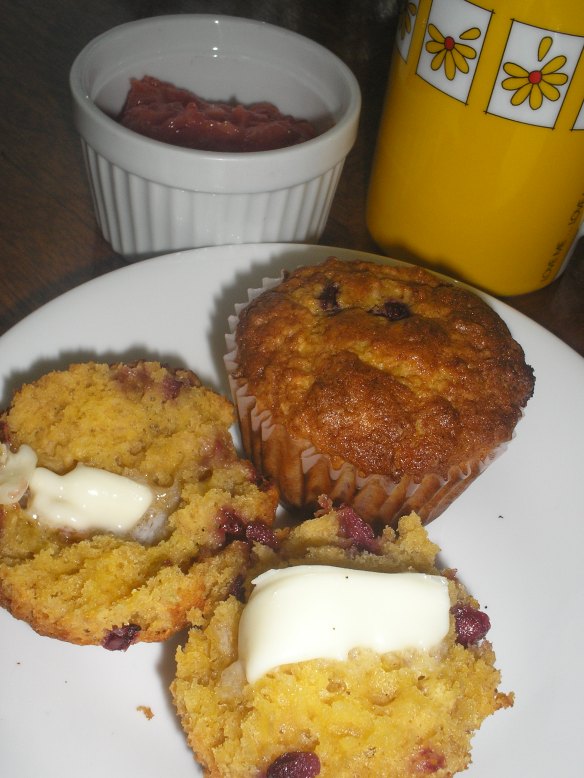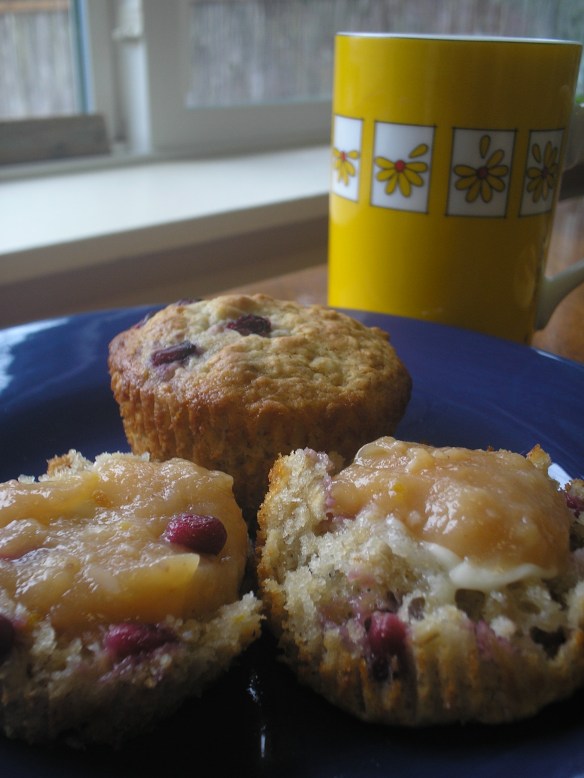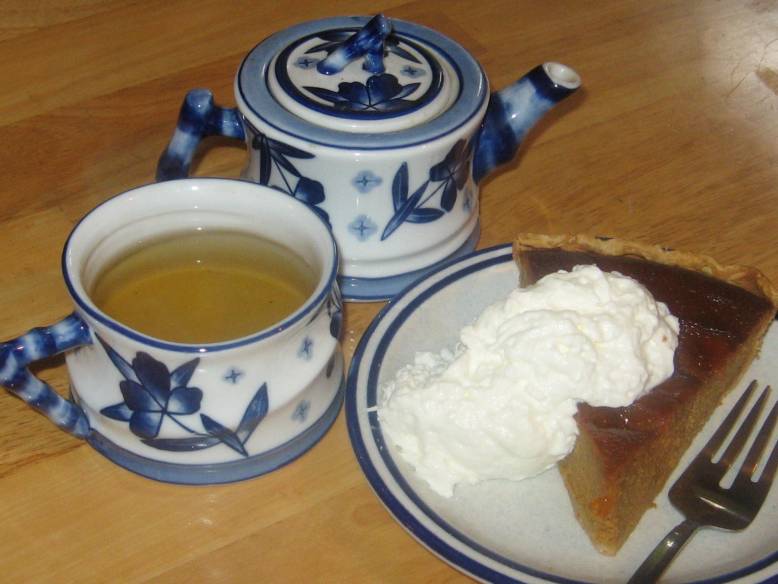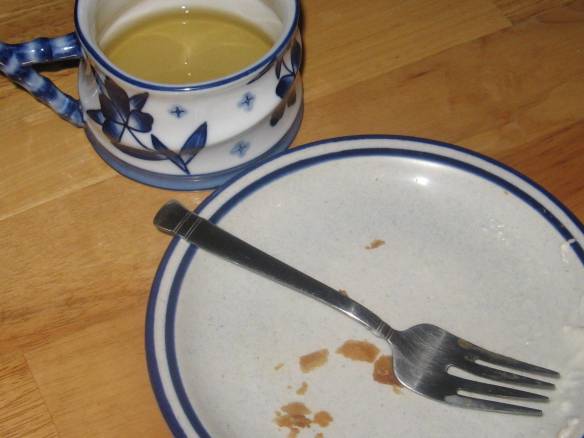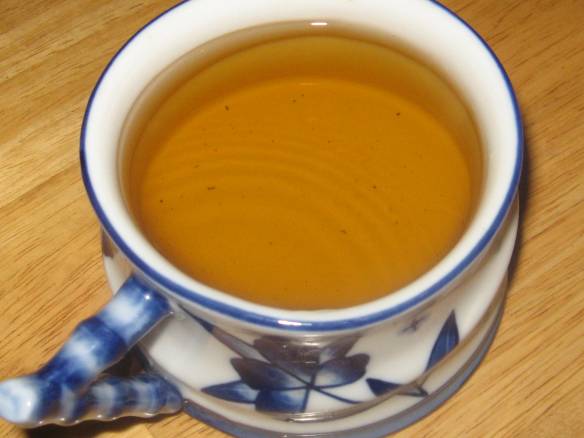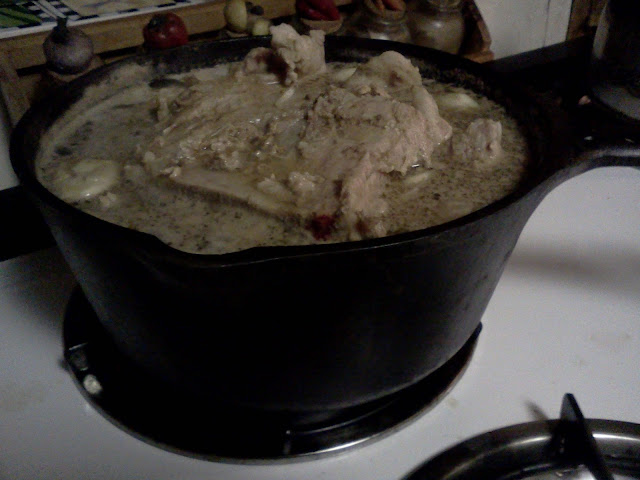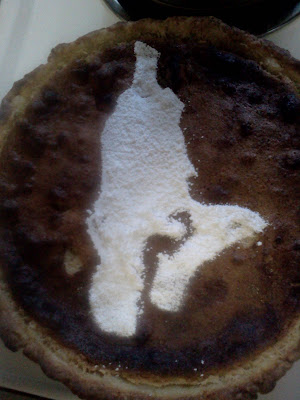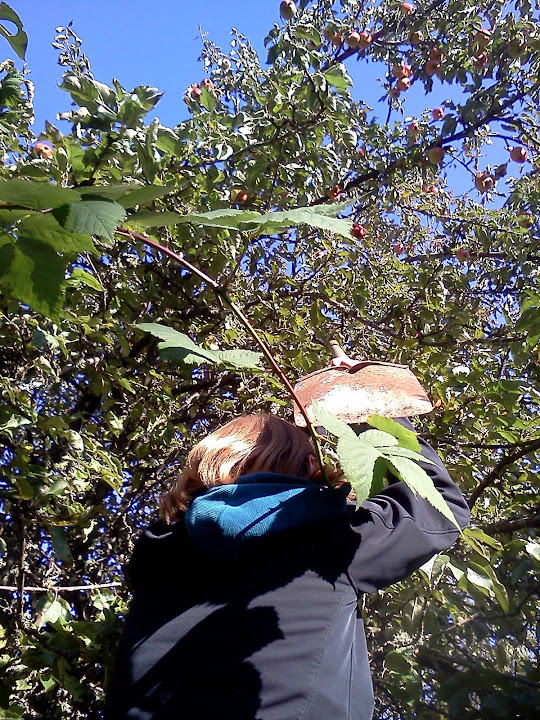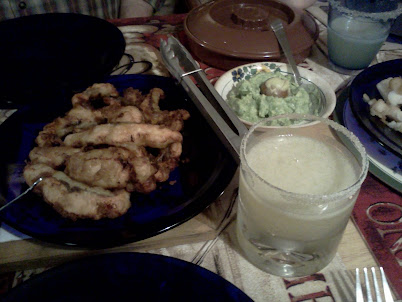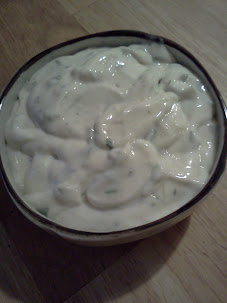I’m calling it. Summer, such as it was in Seattle this year, is officially over. Time to break out the sweaters and buy butternut squash and start leaf-watching.
I walked into my mom’s kitchen this morning and was hit smack dab in the face with the ultimate smell of autumn: German Apple Pancake.
This recipe occupies a sacred place in our family lore. It’s from The Vegetarian Epicure. Mom and Dad were once “plainclothes hippies” – vegetarians, gardeners, in touch with the planet and all. Their copy of the cookbook consistently falls open to the German Apple Pancake page. For a decade now the binding has been broken there, and there are little droplets staining the paper, souvenirs from pancakes past. My dad used to make this recipe for weekend breakfast once the good apples started to appear in the stores. No Red Delicious ever got near this recipe! We’re apple snobs in Washington.
We experimented with all kinds of varieties for the pancake topping…Granny Smith, Fuji, Gala, Jonagold, and in later years, Honeycrisp and Pink Lady. The original recipe suggests Pippens, a varietal that seems to have gone the way of shag carpeting.
The pancake itself is a light, airy wonder, with no leavening, just equal parts egg, flour, and milk, with a pinch of salt thrown in. It gets baked in a seasoned cast-iron skillet, climbing up the sides of the skillet and emerging from the oven a golden pancake bowl that is crisp and airy on the sides and doughy and absorbent on the bottom. This delicacy is subsequently topped with peeled, thinly sliced apples sauteed in butter and brown sugar.
Stop. Close your eyes. Really, you need to do this. Take a minute and just imagine all those smells…melted butter, eggy pancake, apple, caramelizing brown sugar, a bit of nutmeg…THAT is my smell of autumn.
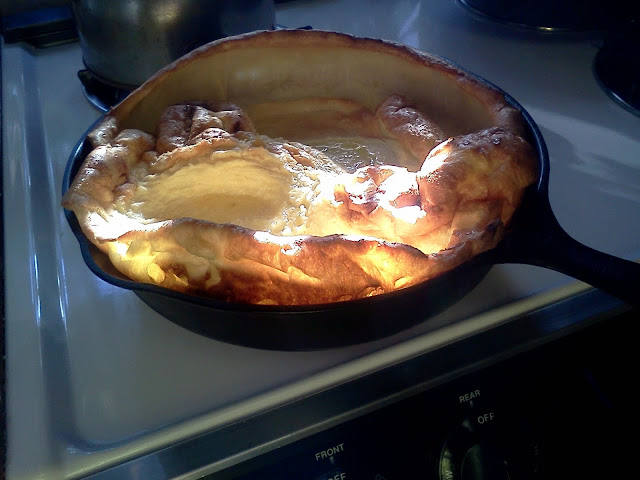
My role as a kid was always to help my dad peel the apples. I was in awe of his skill with an apple peeler. (This is how important this recipe is in my family. We don’t have potato peelers in our kitchen; we got apple peelers here.) His long, curling strips of peel far surpassed Meg Ryan’s in Sleepless in Seattle. By the time I was finished peeling one apple, one round little blurb of peel at a time, he’d already powered through the other three.
He taught me to time it just right, to start sauteing the apples just as I turned down the temperature on the oven so that both apples and pancake would be done at the same time. He taught me to hold back, be a bit patient before starting to eat, so that the juices would have time to soak into the pancake, sweetening it and adding depth to the eggy flavor.
I learned on my own never to tamper with perfection:
German Apple Pancake, as I remember it from The Vegetarian Epicure:
Pancake:
1 TB butter
3 large eggs
3/4 cup flour
3/4 cup milk
pinch of salt
Topping:
4 apples, peeled, cored, and thinly sliced
1/4 cup butter
1/4 cup packed brown sugar
cinnamon and nutmet
Method: Preheat oven to 450 degrees. Melt the butter in a well-seasoned cast-iron skillet, coating the bottom and sides. Mix the eggs, flour, milk, and salt in a bowl and pour into the skillet. Bake for 15 minutes, then reduce heat to 350 degrees and bake ten minutes more.
Saute the apples in the remaining 1/4 cup of melted butter. When the apples are just soft, add the sugar and spices. Fill one half of the pancake bowl with apples, then fold the other half over on top.
Wait a few minutes.
Devour.
 Fold bag in half lengthwise. Smooth, checking for rips or holes that would render the bag useless.
Fold bag in half lengthwise. Smooth, checking for rips or holes that would render the bag useless. Fold bag in half again, lengthwise.
Fold bag in half again, lengthwise. Grasp then bottom corner closest to you and fold it along the opposite edge, creating a right triangle:
Grasp then bottom corner closest to you and fold it along the opposite edge, creating a right triangle: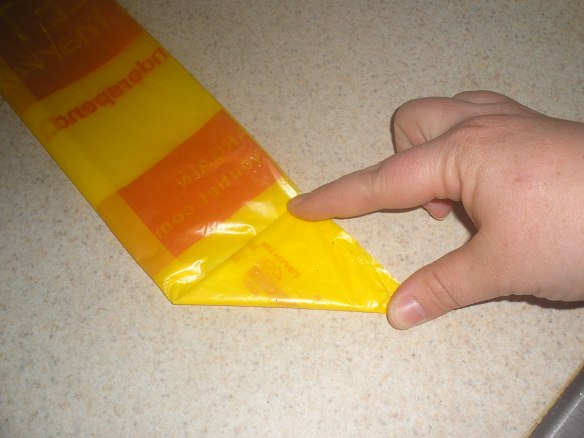 Continue folding right triangles. Resist the urge to create triangles with no 90-degree angles:
Continue folding right triangles. Resist the urge to create triangles with no 90-degree angles: Tuck that bit of handle between the folded layers.
Tuck that bit of handle between the folded layers. TA-DAH!
TA-DAH! Now you can fashion a plastic bag bouquet!
Now you can fashion a plastic bag bouquet! Or, just throw them under the sink. It’s OK; they won’t multiply.
Or, just throw them under the sink. It’s OK; they won’t multiply.


